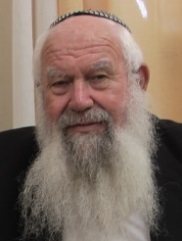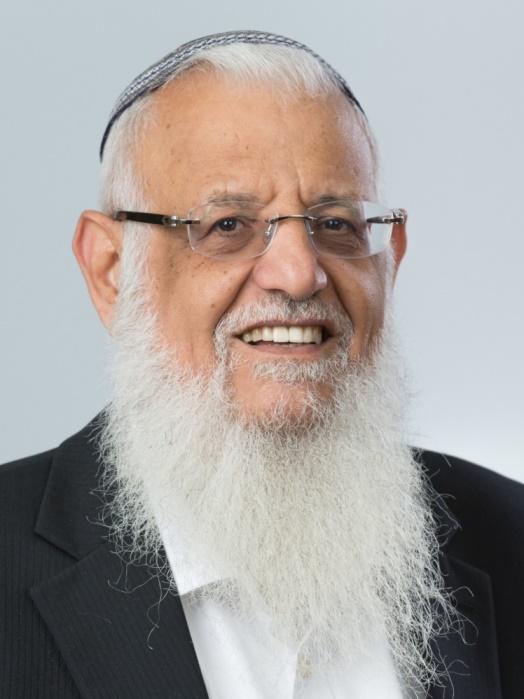Molech
By: Rabbi Dani Zuckerman
Whether you are in Eretz Yisrael reading Kedoshim or in Chutz Laaretz reading Acharei Mos, one of the issurim you will find this week is that of Molech. While the exact nature of Molech is the subject of debate, both Rashi and Ramban hold it is a deity marked by a particularly gruesome form of worship.
Rashi explains that Molech’s worship involved the passing of children between two fires. Ramban goes further and thinks that the children were not only passed through fire, but fully burnt.
Beyond the simple grotesqueness of Molech-worship, one of the unique features of Molech is that, while avoda zara of any kind is of course שקולה כנגד כל המצוות, the Torah in both Acharei Mos and Kedoshim singles out Molech among all of the pagan deities for particular censure.
"ומזרעך לא תתן להעביר למלך ולא תחלל את שם אלקיך אני ה'" (אחרי מות יח:כא)
"ואני אתן את פני באיש ההוא והכרתי אתו מקרב עמו כי מזרעו נתן למלך למען טמא את מקדשי ולחלל את שם קדשי" (קדושים כ:ג)
Molech-worship is a chilul Hashem, it brings tumah to the mikdash, and Hashem personally ("ואני") cuts the worshipper off from klal yisrael
Moreover, the Torah adds a unique phrase when it describes how the Molech-worshipper must be punished.
"עם הארץ ירגמהו באבן" (קדושים כ:ב)
Normally, one who must be stoned is put to death by the court and witnesses who convicted him. Is a Molech-worshipper different in this regard?
Rashi explains that, as usual, it is the court which is charged with carrying out the punishment; the Torah is merely adding that, if the court is incapable of doing so on its own, the nation as a whole is responsible to assist. While this explains how the punishment for Molech-worship fits into the general rules of the court system, it still begs the question as to why is it specifically here that the Torah adds this seemingly parenthetical point.
Additionally, while this explains the term "עם", it fails to suffice for the term "הארץ". Why is it specifically
“the people of the land” who should punish the Molech-worshipper?
Ramban explains this phrase based on a fundamental principle in how Hashem wants us to relate to Him, and the special role that Eretz Yisrael plays in that relationship.
At the end of Parshas Bo, Ramban sums up the purpose of yetzias mitzrayim and all the miracles associated with it:
"ואין קל עליון חפץ בתחתונים מלבד שידע האדם ויודה לאלקיו שבראו"
The sole desire God has of His earthly creations is that we should be aware of and acknowledge our Creator. Ramban explains there how so many mitzvos directly aid in enhancing this awareness and acknowledgement. Tefilla and brachos play a particular role by constantly expressing these fundamentals.
Here in Parshas Kedoshim, Ramban adds another aspect to this idea.
"כי החפץ ביצירה שיברכו עליה לשמו הגדול...ואם לאו יתעלה בשמו הגדול ומסתלקת השכינה מישראל וכל שכן כשיקריב הפרי למולך"
Ramban at first reiterates the principle from Parshas Bo and how crucial it is to recite brachos. He then continues and describes Molech-worship as giving “the fruit” to Molech.
Ramban here expresses what is truly so evil about Molech- and by implication teaches us how our children ought to be dedicated to Hashem. Child sacrifice is not only gruesome, it also distorts the very essence of how Hashem wants us to relate to Him and His world. On anything which grows in this world, we are bidden to say a bracha, to acknowledge God’s creation and continual sustaining of this world. Through mitzvos such as bikurim, teruma and shemitta we give back to Hashem and acknowledge that all which grows- even that in which we invest considerable effort- is truly His. Of all the creations which grow- and in which we invest considerable effort- none is more worthy of this acknowledgement than children. Is there a more wondrous “fruit”? But how do we make this acknowledgement? The property we own can be donated to the mikdash, our livestock can be offered on the mizbeach, our produce can be gifted to Hashem and his servants, but what of our children? How are they “offered” to Hashem? By raising them for Him of course. We don’t say many brachos on children, but pidyon haben certainly reiterates this fundamental principle. The bracha of lehachniso bivriso shel Avraham avinu expresses it as well.
This is not merely a matter for each individual member of klal Yisrael and how he should educate his children. The everlasting, national relationship between klal Yisrael and Hashem depends on each generation passing on the reality of that relationship to its children.
We can now understand why the Torah is so harsh with Molech and why Molech’s eradication is a national concern. One who serves Molech- giving his children over to another deity- not only violates an odious and inhuman crime, he endangers the entire klal by fundamentally mischaracterizing how the subsequent generation should be incorporated into worship.
Children are not objects to be given over- certainly not to Molech, but even, lehavdil, to Hashem. They are budding servants of Hashem who must be developed into their own subjects of His kingdom.
Eretz Yisrael is the geographical location in which this relationship is particularly expressed. It is here that the agricultural laws lead us to acknowledge Hashem’s dominion over our handiwork. It is here that the beis hamikdash allows us to dedicate our property to Him. And it is here in particular where His Shechina rests on the nation, and where even one child misappropriated for Molech-worship can damage that special relationship.
While Molech-worship is unheard of today, the challenge of how to relate to “the fruit”- our children- is as formidable as ever. With all of the effort we invest in them, personally and communally, we must not forget for even a moment that God’s will is that we should bless Him and acknowledge Him on all that he creates and sustains, most of all on our children. Raising our children for Him is a personal responsibility and a national concern, and be’ezras Hashem we hope for success in this endeavor coupled with the full restoration of the Shechina in our land.
Shiur ID: 9144
Do you have a comment or question on the shiur?
Comment below and we'll join the discussion
Add your comments:

.jpg)

.jpg)

